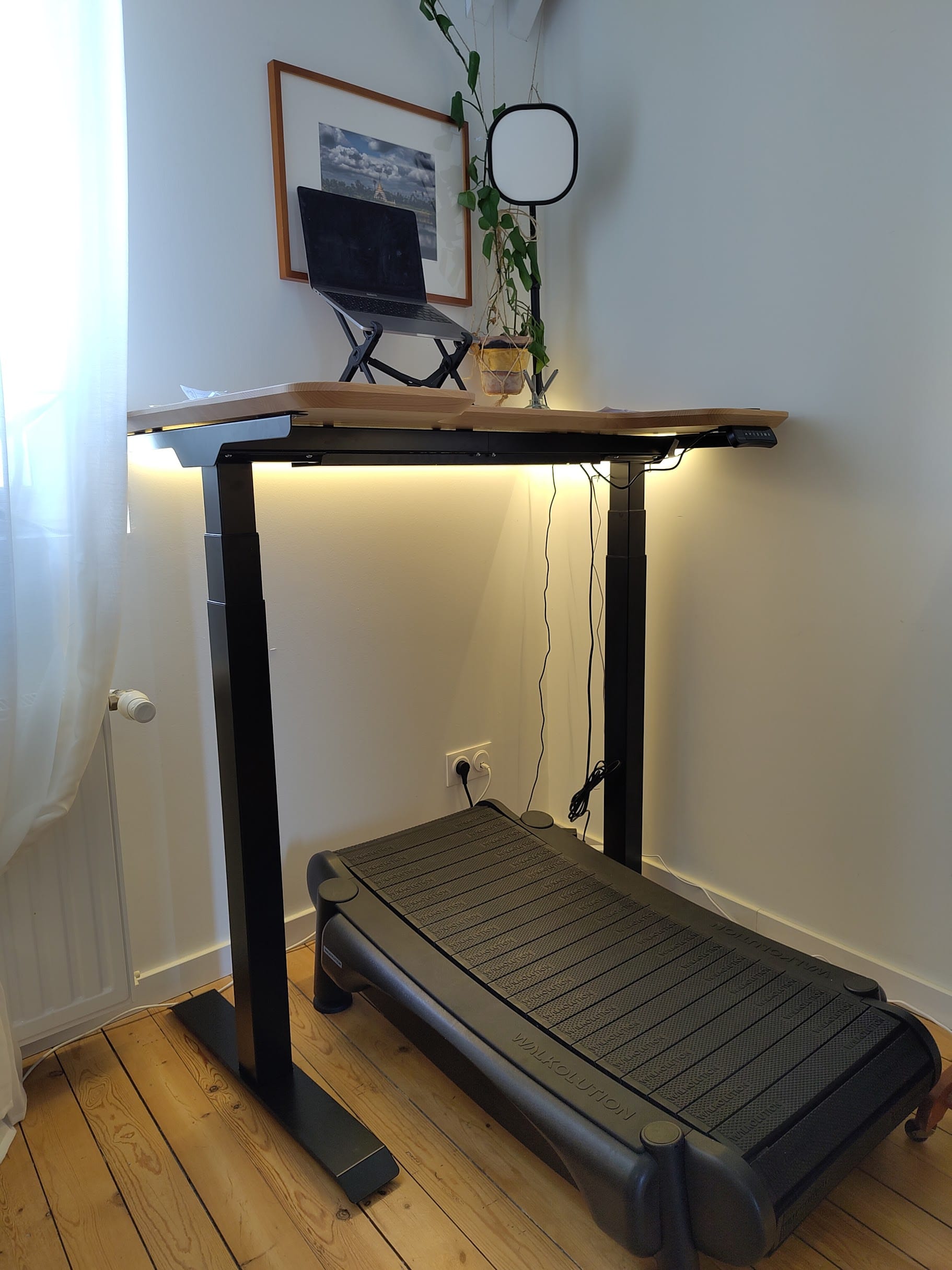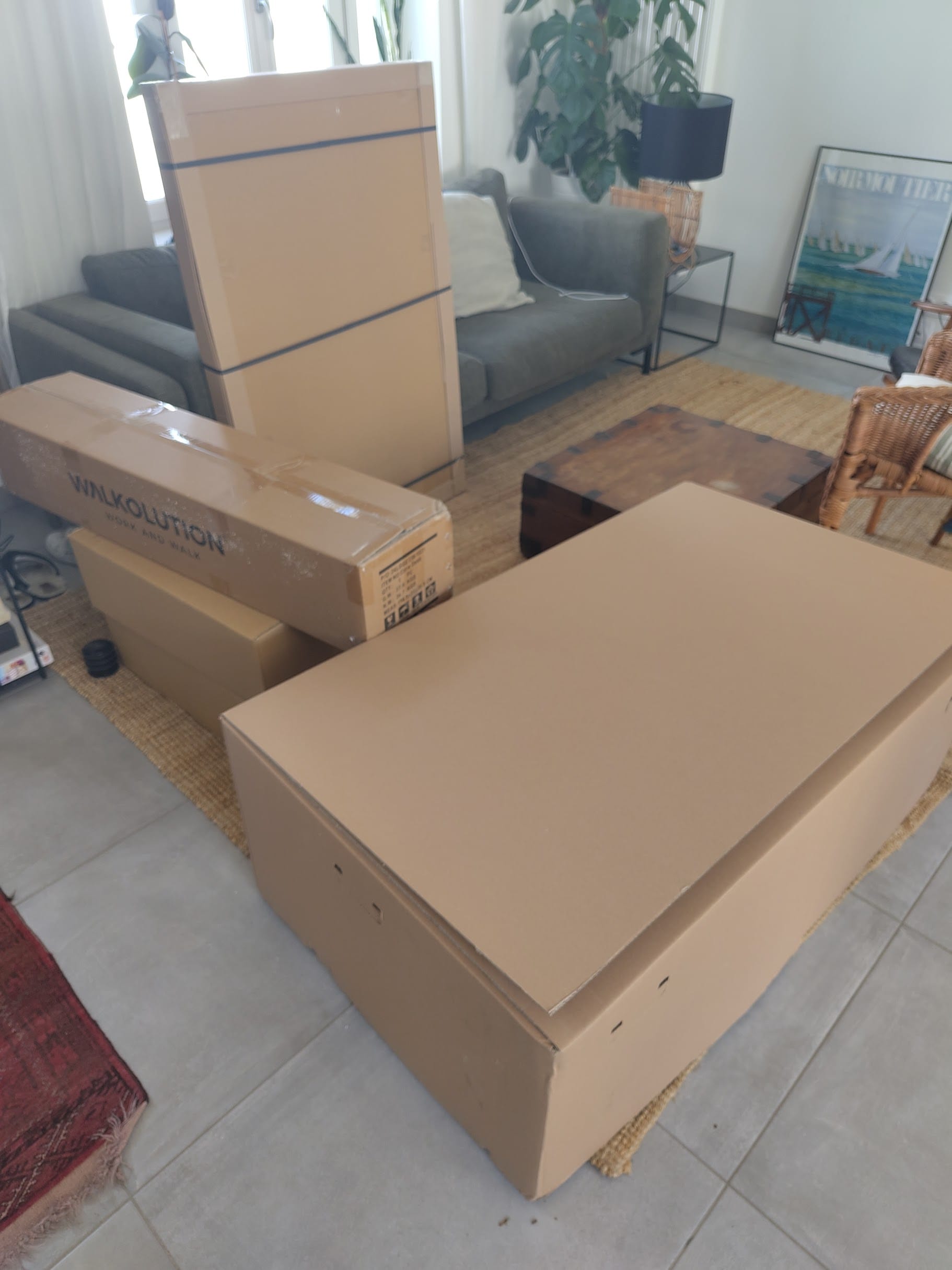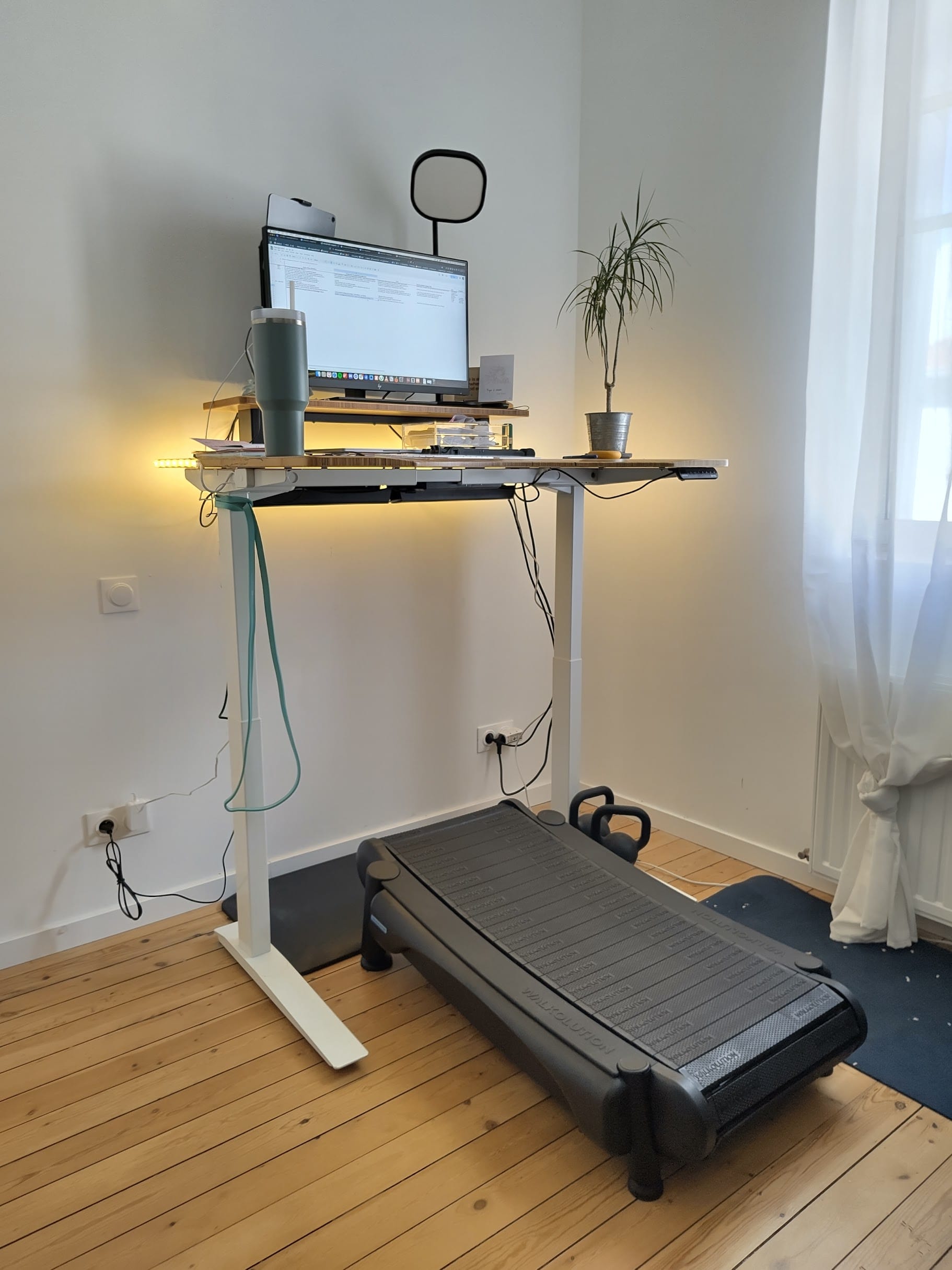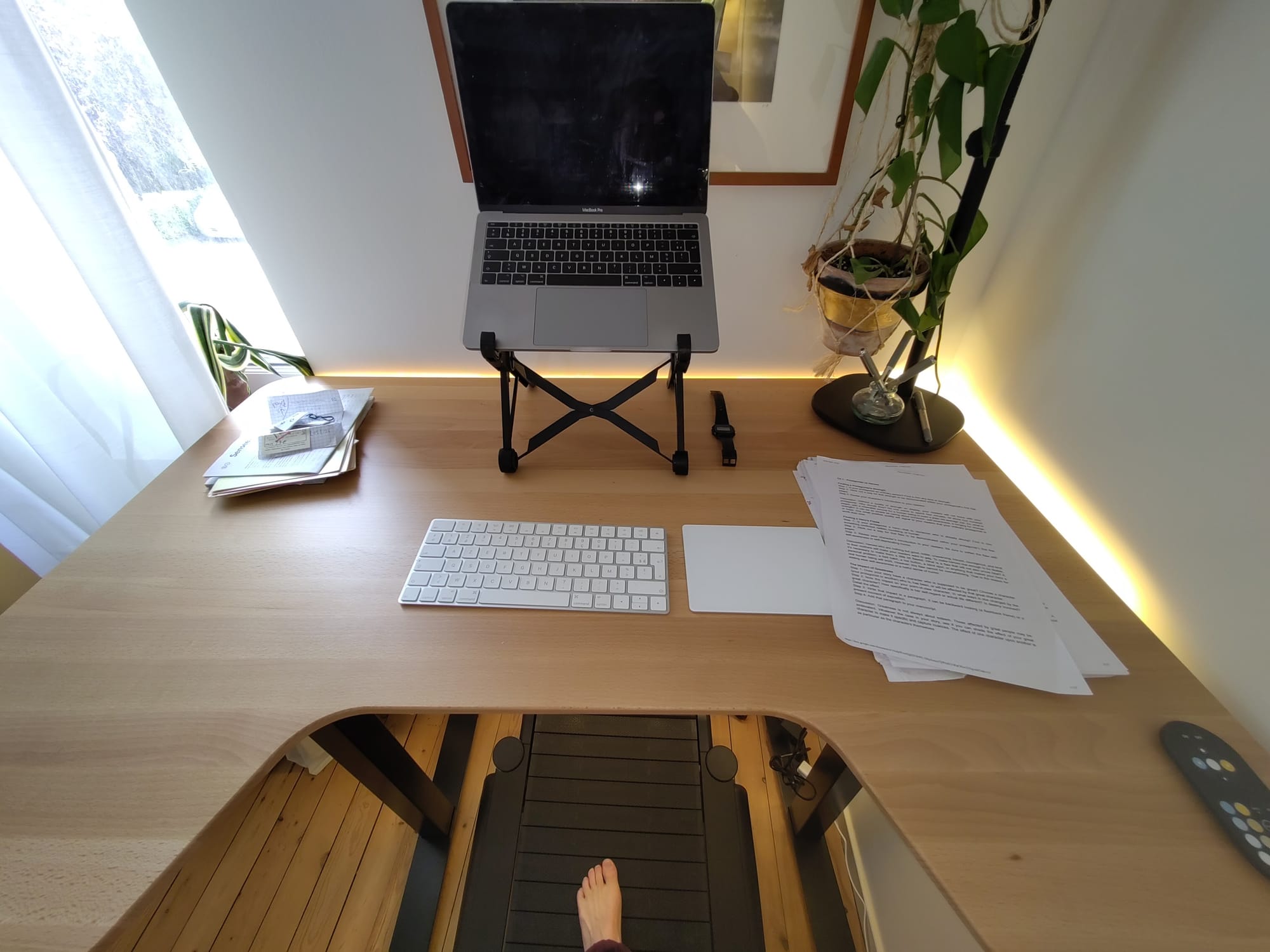I’m 37, I work in tech, and my back hurts. I’m getting a manual treadmill.
TL;DR
- I’ve worked remotely for 10+ years and tried everything: expensive chairs, standing desks, and ergonomics consultants.
- Still, I was stuck with low-grade, chronic discomfort—until I started testing a manual treadmill desk.
- It’s silent, fully manual, requires no maintenance, and arrived fully assembled (at 130kg, including device+desk).
- Yes, it starts around $3,000—but it feels like timeless furniture than a gadget.
- After a month of use, I can see myself walking at this desk for the next 30 years.
The slow creep of too much sitting
Back in my 20s, I could sit for hours in the worst possible positions—slouched, twisted, folded over a laptop—and walk away just fine.
That’s not the case anymore.
These days, even just seeing someone hunched on a train is enough to make my back ache in sympathy. That creeping tension in my hips, shoulders, and lower back has become part of the workday. Not a dramatic injury—just a low, steady hum of discomfort that doesn’t go away.
Like many of us in tech, I’ve spent the last decade working remotely.
And I’ve done what most high-income professionals tend to do when confronted with a recurring problem: throw money at it.
The ergonomic arms race
I’ve gone all in:
- Herman Miller Sayl chair ($600)
- HÅG Capisco saddle chair ($1,000+)
- Fully Jarvis standing desk ($800)
- Virtual ergonomics consultant ($150)
All of it helped… a little. But nothing truly solved the problem.
I kept going back to physiotherapy. And the advice that kept resurfacing—more than posture tweaks or chair adjustments—was always:
“You need to move more. You should walk more.”
That hit me harder than I expected. Because the truth is: I’ll probably spend the next 30 years doing some version of this work.
Typing. Calling. Thinking. Sitting.
Even with the best gear, my body was quietly telling me: this isn’t sustainable.
Enter: the treadmill desk
So I started looking into treadmill desks.
My first stop was Amazon, naturally. Not my favorite place to shop but, hey, they have it all. Their treadmill setups start at $100. I tried a few at my friends. They were… fine.
But motorized treadmills have one big flaw: they set the pace. You’re always adapting to the machine instead of the other way around. Which is fine for cardio—but weird for deep work. And the noise. Oh, the noise…
What I wanted was the opposite. Something that would follow me. That would start and stop as naturally as breathing.
Testing the Walkolution 2.0
Eventually, I reached out to Walkolution, a German company that makes a manual treadmill desk—no motor, no cords, no buzz. They sent me a unit to test. I don’t earn commission on sales.

Here’s what stood out right away:
- It’s silent. No hum, no vibration, no background noise.
- It’s beautifully built—more like high-end German engineering than a fitness device.
- It came fully assembled, which was a relief because the total weight (including the desk) was 130kg. Unpacking it took five minutes.

Walking while working
Something shifted almost immediately. I didn’t “start using it”—I just started walking.
Now I walk through:
- Video calls
- Training sessions
- Long emails
- YouTube tutorials
- Thinking time
It doesn’t feel like exercise. It just feels like not sitting.
Using a $2,000 laptop while sitting a $20 chair makes no sense.
— Rodolphe Dutel (@rdutel) July 8, 2020
The price: is it worth $3,000?
Yes, this treadmill starts at $3,000, and the price climbs with extras (like their custom desk or backrest). That gave me pause too.
Especially when you can find alternatives for $200 on Amazon.
But here’s the thing: those cheaper treadmills are often:
- Loud
- Flimsy
- Built for occasional use—not for decades of work
- Dependent on electricity and prone to wear
They’re not bad, but they’re temporary solutions.
The Walkolution 2.0 feels different. It’s not trying to be a productivity hack. It’s a long-term piece of your workspace. One that disappears into the background and does its job quietly for years to come.
Here’s how I initially set it up with my Jarvis Fully, before changing my time. It turns out that it’s much nicer to use when you have a dedicated desk for it.

A few notes from testing
- I’m not tall, and the integrated desk height works perfectly for me. But if you’re over 6’, you’ll likely need Walkolution’s custom desk—most standing desks don’t go high enough.
- No learning curve. Within a day or two, I was typing and walking like it was second nature.
- No maintenance. No belts to oil. No electronics to calibrate. Nothing to break.
- No noise. You could record a podcast next to it, and no one would know.
So… what now?
I’m still testing it, technically. But something in me has already shifted.
Need to make a phone call? I hop on.
Watching a video? Might as well walk.
Doing deep work? I find it easier with gentle motion.
My guess is that it’s especially useful during cold winter months when I won’t feel like walking around the block, this will keep me moving—without breaking focus.
This is the first desk setup I can imagine using for the rest of my working life.
Not because it’s trendy.
Not because it’s measurable.
But because it feels good.
And honestly, that might be the most valuable upgrade I’ve made in years.
Curious? Check it out over here.


